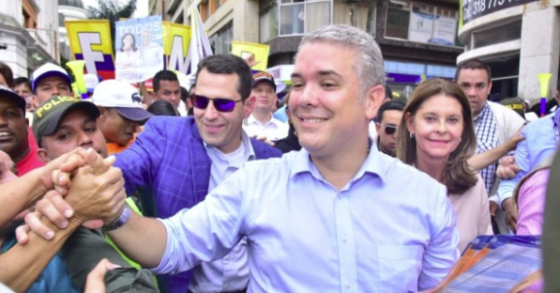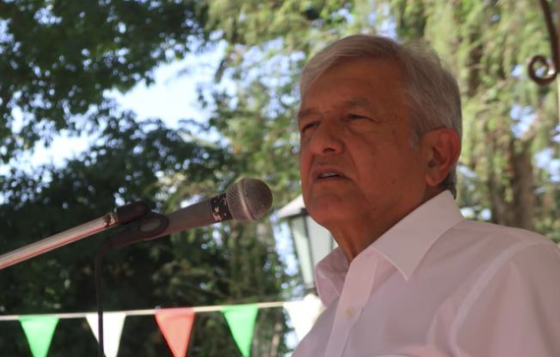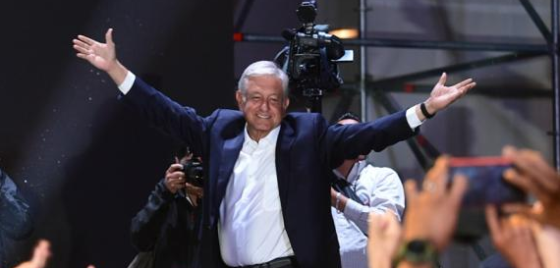
Will Colombia’s New President Deliver on His Promises?
Iván Duque, a conservative former senator, on Sunday won Colombia’s presidential runoff election. What does it mean for the country?
A Daily Publication of The Dialogue
President Laurentino Cortizo on July 11 extended a gasoline price freeze for Panamanians in response to protests led by teachers and trade unions over rising fuel prices. Cortizo has blamed fuel price inflation on external factors, such as the Covid-19 pandemic and Russia’s invasion of Ukraine. What have been the primary drivers of the protests, and why have fuel prices been their focal point? To what degree is political instability increasing in Panama? How strong is public support Cortizo?
Ramón E. Martínez de la Guardia, Panama’s ambassador to the United States: “The triggers of the protests in Panama are the cost of fuel, food and medicines. This is paired with other legitimate grievances related to the rising cost of living. President Cortizo’s administration understands this and has deployed an ambitious agenda to bring more people out of poverty. For example, during the pandemic we launched a program to support those who had been laid off from their jobs. The program, Panamá Solidario, was internationally recognized as a good case of the use of technology and innovation to address the crisis. Panama is facing a challenge similar to that of other democracies in the region. The pandemic stretched government resources and disproportionately hit those in underserved communities. The cost of fuel has made headlines because it affects every sector of the economy. It is understandable that people are concerned. The government wants to facilitate a dialogue to find the best path forward. We must also consider the political context. Panama’s electoral cycle is approaching, and we do not discard the influence of agitators and promoters of unrest for political gain. We do not believe there has been a fundamental change in Panama’s stability, nor that these weeks are representative of the long-term popular support the Cortizo administration enjoys.”
Orlando J. Pérez, dean of the School of Liberal Arts & Sciences and professor of political science at the University of North Texas at Dallas: “Panama is experiencing the most acute social crisis the country has faced since the end of the military dictatorship in 1989. The immediate cause of the unrest is the recent rise in the cost of basic goods. Panama’s dollarized economy has traditionally been spared the inflationary crises so common in the rest of the region. But expenditures during the pandemic, financed mostly by government borrowing, global supply chain dislocations and increases in the global price of oil, have led to significant inflationary pressures. Panama experienced a 5.2 percent year-on-year increase in prices in June, with fuel rising 47 percent since the beginning of 2022. Furthermore, unemployment remains above 10 percent, and the pandemic exacerbated the country’s already unequal distribution of wealth. The protests could not have come at a worse time for President Cortizo. The president has suffered significant deterioration in support since the pandemic due to controversial lockdown policies and corruption cases linked to the procurement of protective equipment and distribution of vaccines. Cortizo’s job approval rating registered a low of 21 percent in May. The president has sought to quell the protests by promoting dialogue and promising to freeze gasoline prices at $3.30 per gallon. Some protesters are demanding further price reductions to include such staples as rice and meat. President Cortizo might be able to satisfy short-term demands through price controls and increased subsidies, but the long-term socioeconomic effects of the pandemic and the pervasive perception that the government is mired in systemic corruption are likely to erode the president’s authority for the remainder of his time in office.”
Joaquín Jácome Diez, founder and senior partner at Jácome & Jácome: “When Covid-19 hit in 2020, Panama’s economy was already in decline. The consequences of the pandemic have been disastrous for Panamanians in several aspects, mainly in the labor market. Unemployment, especially for young people, is rocketing, and inequality has increased dangerously in our country. The price of fuel and inflation as a result of the war in Ukraine continues to be a heavy burden on a battered Panamanian population. On top of this, President Cortizo’s government has failed to deliver concrete solutions on economic, social, political and transparency issues. Even though the executive branch has enacted some positive initiatives in areas such as attracting foreign direct investment, a perception of mismanagement, lack of coordination among public institutions, unjustified increases on the public payroll, and corruption have played essential roles in the current crises. The Panamanian people feel deeply offended and humiliated, especially by the behavior of deputies of the National Assembly, as well as corruption and a lack of empathy during these difficult times. The relationship between the executive and legislative branches, both of which are controlled by PRD, President Cortizo’s party, has been from the beginning of his administration its worst failure. Citizens’ frustration that the president does not rein in deputies’ behavior is causing tremendous damage to his government, agenda and therefore to the country. The power struggle between both branches of government overshadows whatever effort the president’s team is making. The results are that people are hurt economically and socially, and that they are fed up with the administration in general and the National Assembly in particular. Social unrest, roadblocks and shortages of fuel and food in some cities during the protests are worrisome. Budgetary restraints to offer concrete solutions and government credibility have deeply affected this situation and made it complex, fluid and potentially dangerous. The government has reached an agreement with some groups on freezing fuel prices, but unless the president makes hard choices economically and politically, protests may continue.”
Sabrina Bacal, director and host of opinion and analysis program Radar at TVN Media: “High gasoline prices were the last drop which made social discontent overflow in Panama. President Laurentino Cortizo’s government has since yielded in this regard, yet protests and shutdowns continue. This social and political crisis is the result of the sum of several factors: economic inequality coupled with a poorly functioning judicial system incapable of sanctioning the political elites, in addition to corruption and a lack of governmental transparency notably accentuated during the pandemic. During two years of the health emergency, Panama’s population was subjected to a strict shutdown, leading to record unemployment and poverty growth. This was in stark contrast to excessive and unjustified spending by the government. Several scandals exhausted the patience of the citizenry and generated a true credibility crisis for the authorities. This perfect storm was fueled by increasing prices for gas, medicines and basic foods, resulting in the largest protests in decades. The government’s announcements and efforts to engage in dialogue are deemed as both late and insufficient. Citizens clamor for the government to demonstrate its true intent to change, to institute austerity measures and to change key or symbolic cabinet figures.”
 The Latin America Advisor features Q&A from leaders in politics, economics, and finance every business day. It is available to members of the Dialogue’s Corporate Program and others by subscription.
The Latin America Advisor features Q&A from leaders in politics, economics, and finance every business day. It is available to members of the Dialogue’s Corporate Program and others by subscription.
Iván Duque, a conservative former senator, on Sunday won Colombia’s presidential runoff election. What does it mean for the country?
Mexicans go to the polls on Sunday, July 1, for the country’s presidential, legislative and local elections. What can we expect?
Leftist Andrés Manuel López Obrador swept to victory Sunday in Mexico. What changes are in store?
 Photo: @AEVePan via Twitter
Photo: @AEVePan via Twitter

